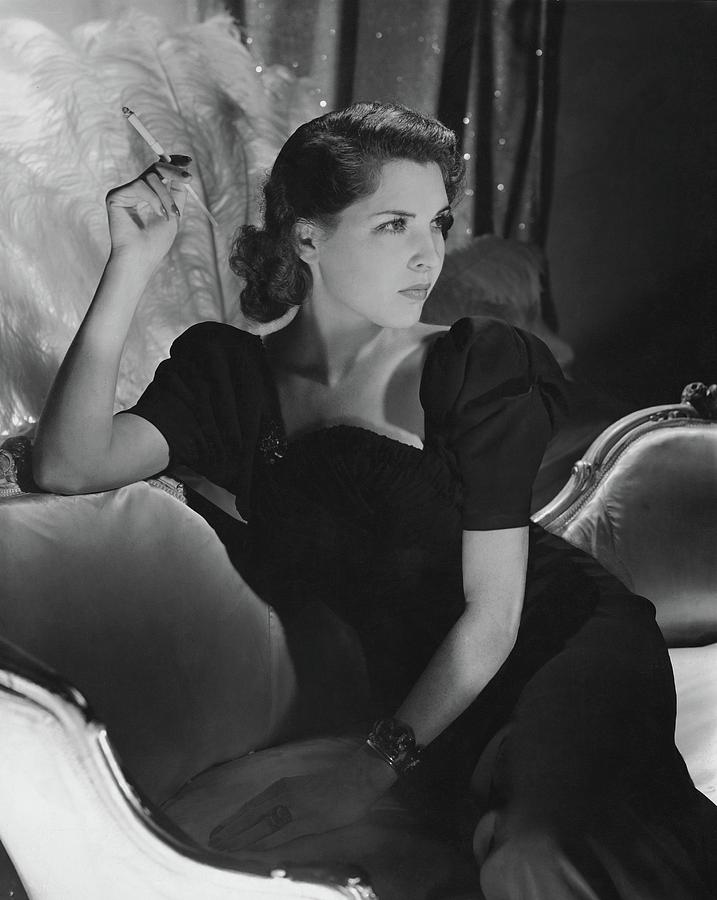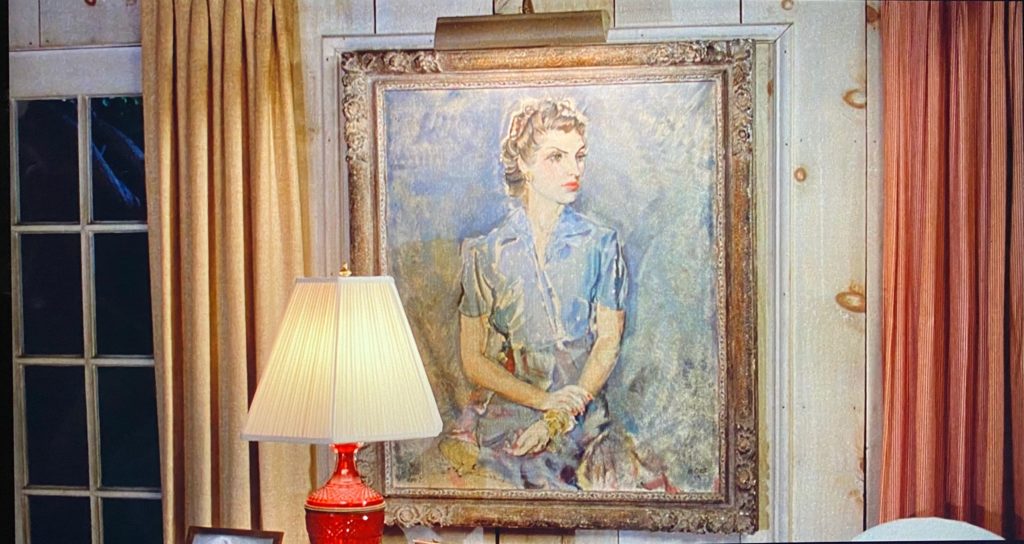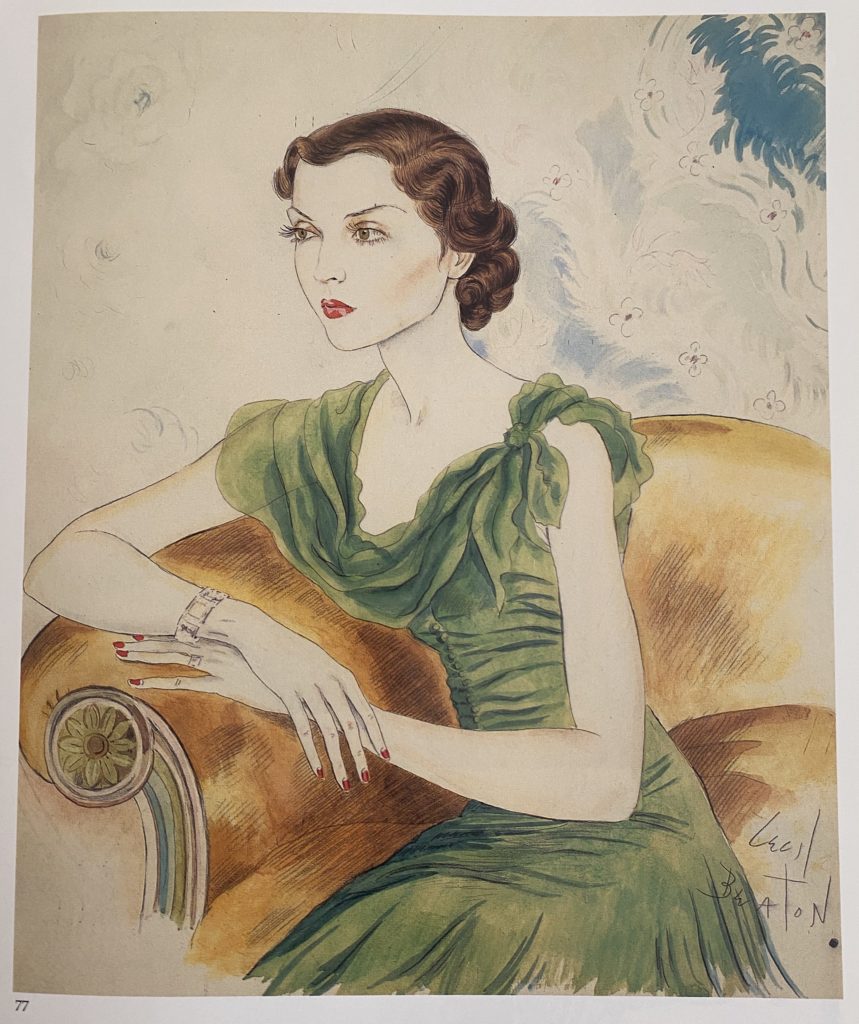Still of the Night and Dorothy Hirshon
by habituallychic
04 . 15 . 20
In 2012, Andy Cohen asked Meryl Streep on Watch What Happens Live, “Name one bad film that you have made.” Her answer was, “Still of the Night” a film in 1982 in which she co-stared with Roy Schieder and re-teamed her with her Kramer vs. Kramer director Robert Benton. It wasn’t an Oscar contender but I enjoy the film set in the auction world with references to Hitchcock movies and a home on Long Island that definitely makes it worth watching.
After I saw Still of the Night the first time, I tried to find out where it was filmed with no luck but another recent search was rewarded with the answer on AFI Catalog.
10 Apr 1981 HR production charts, listing the title as STAB, confirmed that principal photography began 18 Mar 1981 in New York City. Production notes indicated that Benton frequented the city’s Sotheby Parke-Bernet auction gallery, and hired its senior manager, Thomas E. Norton, as a technical advisor for the picture. Interior filming for the scenes in the onscreen auction house, “Crispin’s,” “Sam Rice’s” office, and the apartments of “Gail Phillips” and “Brooke Reynolds” took place at Camera Mart Studios on West 54th Street. Sotheby’s interior was replicated using photographs, with the addition of a staircase. Scenes in Sam’s apartment were filmed at Phoenix Studios on West 59th Street. Other locations included the International House on 123rd Street and Riverside Drive, Apthorp apartment house on 79th Street and Broadway, the Museum of the City of New York, and a Glen Cove, Long Island, NY, home owned by Dorothy Hirshon. Set decoration consisted of furniture and valuables rented from New York City’s Newel and Kentshire Galleries and private collections, including a Duane Hanson sculpture specially shipped by its owner from Milwaukee, WI. Unable to find satisfactory furniture for Sam’s psychiatry office, a custom-made teak wood couch was built for the set. In addition, Nestor Almendros claimed to have used inspiration from artists Piero della Francesca and Edward Hopper, as well as filmmaker Fritz Lang, when coloring, lighting, and framing the picture.
This led me down a long rabbit hole that led to some interesting discoveries about Dorothy Hirshon and her three marriages and many homes.

Dorothy Hart Hearst Paley Hirshon was a very glamorous socialite and philanthropist and you can see from the Horst photo above why she married very well three times. From her obituary in The New York Times, Dorothy grew up in Los Angeles and described as ”one of the most beautiful girls in Southern California” by Irene Selznick. She was 19 when she met her first husband, John Randolph Hearst, the third of William Randolph Hearst’s five sons, while sailing on a yacht off Santa Barbara in 1927. “Mrs. Hearst, hoping to set an example for her husband, who rarely showed up for work, took a job writing a column for Harper’s Bazaar.”
They lived in a duplex penthouse at 79th Street and Park Avenue and her great interest and knowledge in art collecting began when she was married Jack Hearst. His father, William Randolph Hearst, was very fond of his beautiful young daughter-in-law and often took her with him when he visited galleries.

According to The New York Times, “Mrs. Hearst met Mr. Paley, the dashing head of the Columbia Broadcasting System, in 1931. According to friends, it was immediately obvious that he was determined to marry her.”
“After some months, she went to Nevada and filed for a divorce. Mr. Hearst followed her; the couple reconciled and returned to New York. Five months later, Mrs. Hearst again traveled to Las Vegas and was granted a divorce. In May 1932, she married Mr. Paley in Kingman, Arizona.” She was 24 years old.
”Although seven years his junior, Dorothy was more worldly than he,” Sally Bedell Smith wrote in ”In All His Glory,” her 1990 biography of Mr. Paley. ”She knew her way around in sophisticated circles; friendships with men like Randolph Churchill counted a great deal to the ambitious Paley. In New York, she joined the Algonquin set — the playwrights, journalists and other intellectuals whose luncheon ripostes during the 1920’s became a literary legend.”

Over the years, Mrs. Smith wrote, Mr. Paley’s wife had an impact on him — ”her political leanings, appetite for news, taste in art and sense of style. She supported Franklin D. Roosevelt and embraced his proposals for social welfare.”
David Patrick Columbia wrote in Quest magazine in 1993: ”They were the golden couple on the town. She became his Pygmalion. His hunger to know satisfied her trenchant desire to teach. He had the instincts, but she, despite her youth, had the instincts and the knowledge. She began transforming his life. She got him to Savile Row tailors. She encouraged him to buy art and introduced him to dealers. In a short time they began to accumulate what is now known as the William Paley Collection. At her suggestion, they pursued the thoroughly modern path of psychoanalysis.”

She was sketched by Matisse, photographed by Cecil Beaton and Horst, listed as one of the world’s best-dressed women and featured in Vogue and Harper’s Bazaar. She decorated Kiluna Farm, their 85-acre estate in Manhasset, with a saltwater pool and an indoor tennis court, lining the walls with their growing collection of Impressionist and Post-Impressionist paintings. Twenty-two servants looked after the house, gardens and greenhouse. According to the blog Old Long Island, “Kiluna Farm was demolished c. 1990 after an arson fire destroyed much of the building.”

Last year, David Patrick Columbia posted on New York Social Diary that Dorothy and William Paley’s New York home at 36 East 74th Street between Park and Madison Avenues was to be the site of the 2019 Kips Bay Decorator Show House. The double wide 12,000 square foot Georgian style house measuring 40 feet wide was built in 1920 for Richard Whitney, a prominent banker with J.P. Morgan. The Paley’s purchased it in the 1940s and according to David Patrick Columbia, “Dorothy had selected a house that must have impressed her husband who with his ego was naturally attracted to the grand. Grand but not intimidating; because the scale of the rooms except for the public rooms were either welcoming because of the natural light coming through the large, tall windows. Or intimate. And comfortable.”
“She must have chosen it for all of those reasons, and for knowing what impressed and pleased her husband (of that time) — which of course would reflect on his own sense (or need) of “position” in the world. But between the War (WWII) where he was away in London frequently for long periods (CBS was the leading wartime broadcasting source, headed by Edward R. Murrow), and then as the marriage was failing, obviously from his extra-marital activity. From all reports, and I was aware of a lot of them (biographies fill you in), and although Dorothy was a strong and steady woman psychologically, when he left and divorced her quickly only because his new wife-to-be was already expecting, the house no longer could serve the purpose of pleasing him and his needs and his ego.”
The Paleys separated in 1945, shortly after Mr. Paley returned from wartime service in London. Mrs. Smith observed in her book that Mr. Paley’s ”peccadillos weren’t the only symptom of trouble ahead.”
”To those with a sharp eye, other hairline cracks were showing in the marriage,” Mrs. Smith wrote. ”When Dorothy corrected him in public, she was brisk and impatient, not gentle.”They were divorced in 1947, and she received some paintings, furniture, silver and $1.5 million.”I never behaved as if the world revolved around him,” Mrs. Hirshon once recalled about her marriage to Mr. Paley. ”Maybe that was a problem.”
“In their divorce in 1947 and his subsequent marriage to Barbara (Babe) Cushing Mortimer, Mister kept Kiluna and sold Dorothy the house on East 74th Street. For a decent profit also.”
“The great house, like much of the great art she led him to, no longer fit the bill. She sold the house not long after and moved into something more adaptable for her and her children.”

Following her divorce from William Paley, Dorothy Hart Hearst Paley married stockbroker Walter Hirshon in 1953, and upon divorcing him, in 1961, commissioned the home above for herself in Glen Cove, New York.
In the Sotheby’s catalog, Property from the Collection of Dorothy Hirshon from 1998, David Patrick Columbia wrote about her next house, “Dorothy was eighty years old when she built and moved into Pond House in Glen Cove. It was just down the road from Willow Pond, a much larger house and piece of property that she’d had for more than thirty years.”
I reached out to David Patrick Columbia and asked if he had any photos of Pond House and he was kind enough to reply.
“I don’t have any photos of it. I looked the house up in an old AD under the new owners (if they still own, I don’t know). It doesn’t look like the same house. I have a couple of photos of the living room. When she built it (it was to be a smaller house than the one she had for decades out there), the exterior, stucco was painted a California pink (which was her home state). It was in many ways a California house — lots of glass, the living room overlooked a pond where two swans mated and visited year (she fed them). The bathroom in the master bedroom which was on the ground floor had one wall all glass/windows that overlooked the back of the house — lawns and then woods. Which kind of surprised me because the bathtub was strategically placed so that bathing your view/you were surrounded by the lawn and the woods. Naturally I thought: but what if someone were in the back of the property while you were bathing.”

New York Cottages & Gardens published a house in 2017 that was attributed to being built in the 1960’s by Dorothy Hirshon but according to one real estate listing I found, it was supposedly built in 1989. That fits with the timing of Dorothy building a smaller second house called Pond House on a smaller property. I also found a Street View image with an address sign that says Pond House so this was the second house.
A description from the article also fits the one of the photos below from the Sotheby’s catalog. “Among Canet’s changes to the layout: an expanded living room, achieved by removing columns and built-in bookcases, and a freshly defined dining area, thanks to a new wall that separates it from the kitchen. The formerly formal living room has now become a focal point of family life. Canet’s clients really wanted to be able to use the space all the time.”
Just looking at the house,” Canet says, “you can tell that she wanted it to have a sense of European glamour about it.” It doesn’t look like anything of Dorothy remained after the renovation.

The photo above is a terrible shot of the exterior of the house in Still of the Night. Interior designer Billy Ceglia grew up in Glen Cove and asked his mother about Dorothy’s houses and it took a village of people to figure out where this house, Willow Pond, was located. After Dorothy built Pond House, the Willow Pond house had another owner who made significant changes that made it look like a storybook cottage. For unknown reasons, it was later left abandoned and has significantly deteriorated.

Still of the Night was filmed in 1981 in part of the Willow Pond house.
The Sotheby’s catalog does verify that Still of the Night was filmed at her house since the artwork in the movie can be seen listed for sale.

This Kimoura painting from 1956 reminds me of the style of Pierre Bonnard.

One of the reasons I love Still of the Night besides the house filled with art, books, and antiques, is the style of Meryl Streep’s character. The outfits she wears including this dress would look just as chic today as it did in 1982 when it was released.

The house has wonderful old paneling and a lot of hidden doors.

I love the back of her dress.

The interesting painting behind them in this scene is listed in the Sotheby’s catalog below.


A part of her Childe Hassam painting Long Island Landscape (Path to the Beach) can be seen in Still of the Night.

Long Island Landscape (Path to the Beach) by Childe Hassam also graces the cover of the Sotheby’s catalog and had an auction estimate of $300,000-500,000. I’ll have to find out the final hammer price after everyone goes back to work.

The red wall to wall carpet was an interesting choice but it looked like Kiluna Farm has wall to wall carpet as well. If anyone knows if a decorator worked with Dorothy on her homes, please let me know.

Strawberries by Thierry Osborne had a place of prominence above her fireplace in every house.

The drawing room as seen in the Sotheby’s catalog with Strawberries by Thierry Osborne.

A page from the Sotheby’s catalog.

I love all the bookshelves in this house. I’m going to have to see if I can read the titles some day.

Another scene takes places in Dorothy’s bedroom upstairs with a screen that was later for sale at Sotheby’s.

A page from the Sotheby’s catalog with the screen.

You can just barely see a post of Dorothy’s mirrored bed.

Interior designer Bunny Williams now sleeps in Dorothy’s bed which was originally made by French designer Serge Roche. John Rosselli purchased the 1930s mirrored bed at Sotheby’s. I didn’t see it listed in the catalog but I haven’t gone through every single lot yet.
UPDATE: I heard from Bunny that John found the bed in the back floor at Sotheby’s. It was in terrible condition and was not assembled and nor was it part of her sale.

Another shot of Roy Scheider in Still of the Night.

A look at the Drawing Room of Pond House from the Sotheby’s catalog.

A portrait of Dorothy Hirshon taken by photographer Todd Eberle in 1993 and included in his book Empire of Space. Her portrait drawn by Matisse is displayed behind her.

Dorothy’s step daughter, Diana Joy Hirshon Parkinson Briggs Ingham has a copy of the same portrait in her apartment which was featured on New York Social Diary.

One last look at Still of the Night.

If that wasn’t enough, there’s a great story about Dorothy and emeralds. In 1940, Dorothy, then married to William Paley, came back from their trip to South America with a bagful of emeralds. She brought them to Fulco Verdura and told him she wanted a necklace of these stones with no diamonds, something she could wear in day time. The Verdura Scarf necklace was born in 1941 but was reissued in 2014 as part of the Verdura 75th Anniversary Collection.

From The New York Times, “Although she participated in a number of social projects throughout her life, raising money to build a nursery school in Harlem, for instance, and serving as a guidance counselor at the Downtown Community School in the 1940’s, she became more involved in philanthropic and community activities in the last 40 years” of her life.
“She worked with the Neighborhood Children’s Center for more than two decades, was a member of the New York City Human Rights Commission, served on the Hospitality Committee of the United Nations in the 1960’s, and became a board member of the Vivian Beaumont Theater, a board member of Lincoln Center in the 1980’s and a trustee of Carnegie Hall. She was also on the board of Phoenix House and was a trustee of the New School for Social Research until her death” in 1998.

“Space, light; swans, dogs, and cats (all strays); flowers, legions of friends, fine art, antiques, objets, and Dorothy. Her world. All now a memory. Brilliant and remarkable. Like Dorothy.”
– David Patrick Columbia in the Sotheby’s catalog



